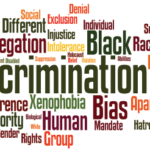 “I’m actually from Iowa. Where do you hail from?” I replied, in the friendliest tone I could muster. Many readers may already know the context, but I’ll rewind a few moments to clear up any ambiguity.
“I’m actually from Iowa. Where do you hail from?” I replied, in the friendliest tone I could muster. Many readers may already know the context, but I’ll rewind a few moments to clear up any ambiguity.
I was in clinic and talking with a kind lady with joint pain. While I was in the middle of examining her joints, she smiled at me and asked, “Doctor, where are you from? Your English is really good.” Having answered this same question literally hundreds of times during medical school, residency, fellowship and academic practice, I instinctively responded with my stock reply.
This is a classic example of a microaggression, a term used to describe “brief, everyday exchanges that send denigrating messages to certain individuals because of their group membership.”1 In this case, my patient had—most likely unintentionally—tagged me as an outsider due to my status as an Indian American, which, I should add, makes me no less American or Iowan than anyone else.
Despite their name, microaggressions are not tiny: Their cumulative volume is often significant, and even in apparently small doses, microaggressions are sufficient to cause significant negative effects on well-being. But what are these microaggressions, why are they important to acknowledge, and how do we address them?
Let’s rheuminate.
Microaggressions Under the Microscope
Although microaggressions appear to have an extraordinarily long history, the term was first coined in 1970 by Chester M. Pierce, a professor at Harvard University, Boston, with specific reference to the dismissive behavior inflicted upon African Americans. Over the past half-century, with greater awareness, the term has expanded to include socially marginalized groups at large—including such aspects of identity as gender, sex, sexual orientation, disability, age, body shape, class, religion and more—and to include behavior that may be otherwise seen as well-intentioned.
The term is not without its own controversies. Microaggressions have very real effects, but they are difficult to study due to their subjective nature. Because microaggressions are simultaneously ubiquitous but invisible, explaining what a microaggression is takes a disproportionate effort. The concept is also wrapped up in sensitivities that make it difficult to talk about, despite the importance of broaching such conversations.
According to D.W. Sue, professor of psychology and education in the Department of Counseling and Clinical Psychology at Teachers College, Columbia University, New York, microaggressions can be categorized in four groups: microassaults (i.e., explicit verbal or nonverbal derogation), microinsults (i.e., hidden insulting messages to the recipient), microinvalidation (i.e., communications that dismiss the experiential reality of the recipient) and environmental microaggressions (i.e., insults or invalidations at the systemic level).


